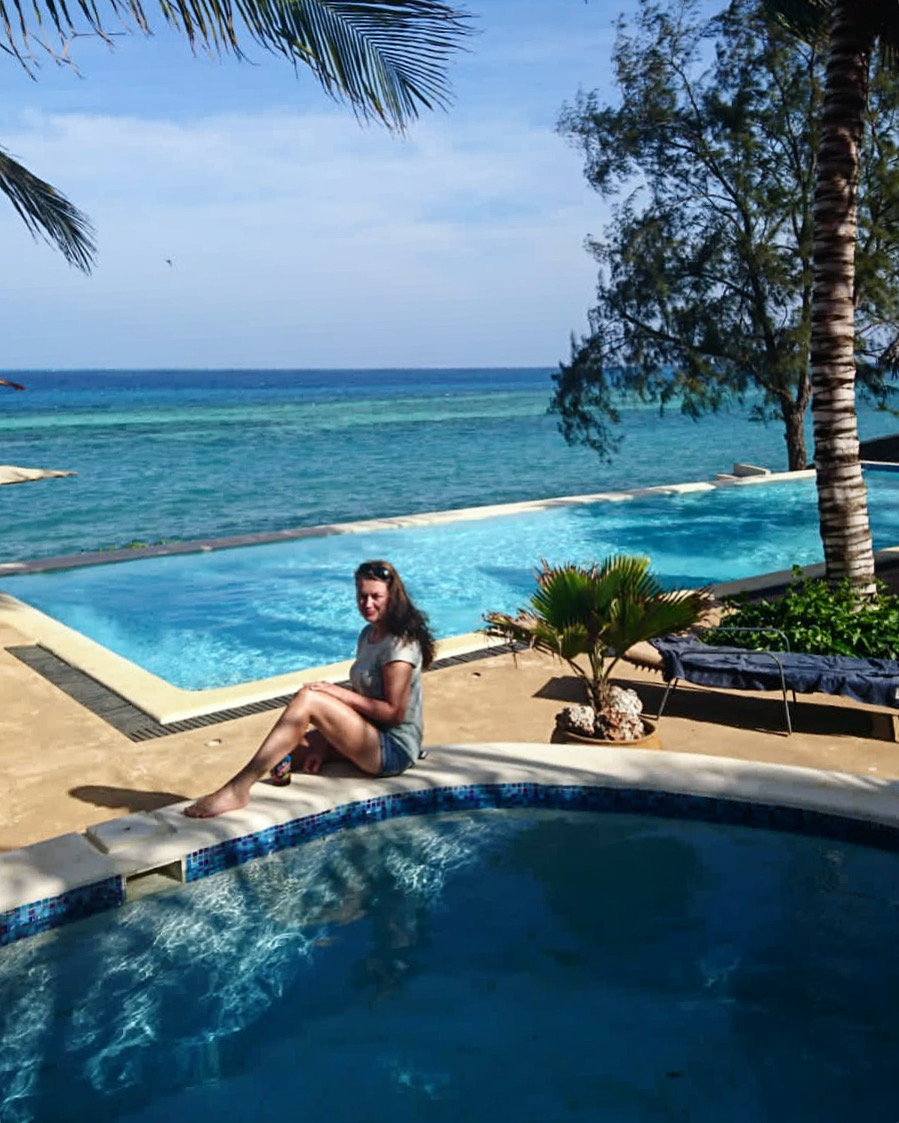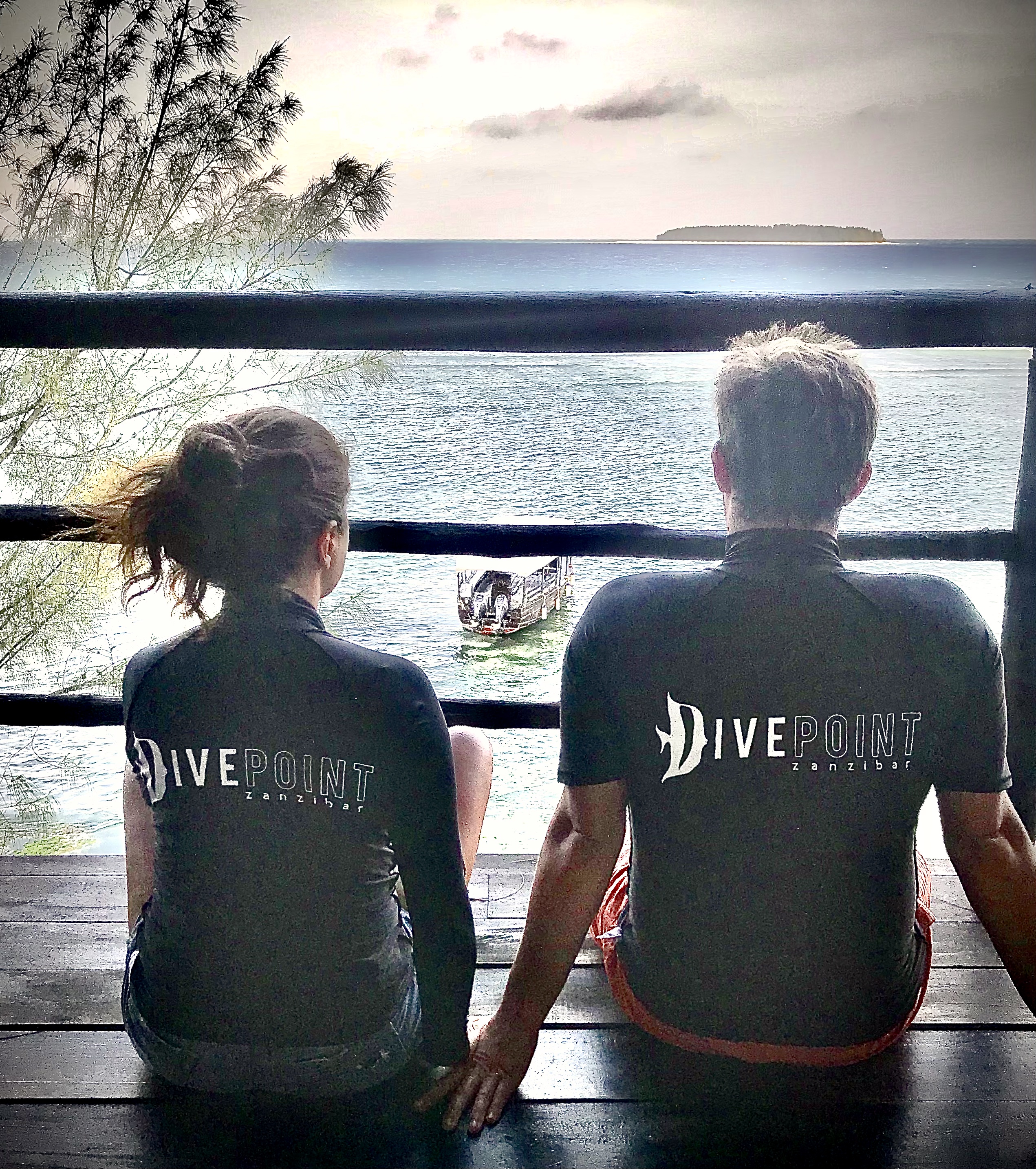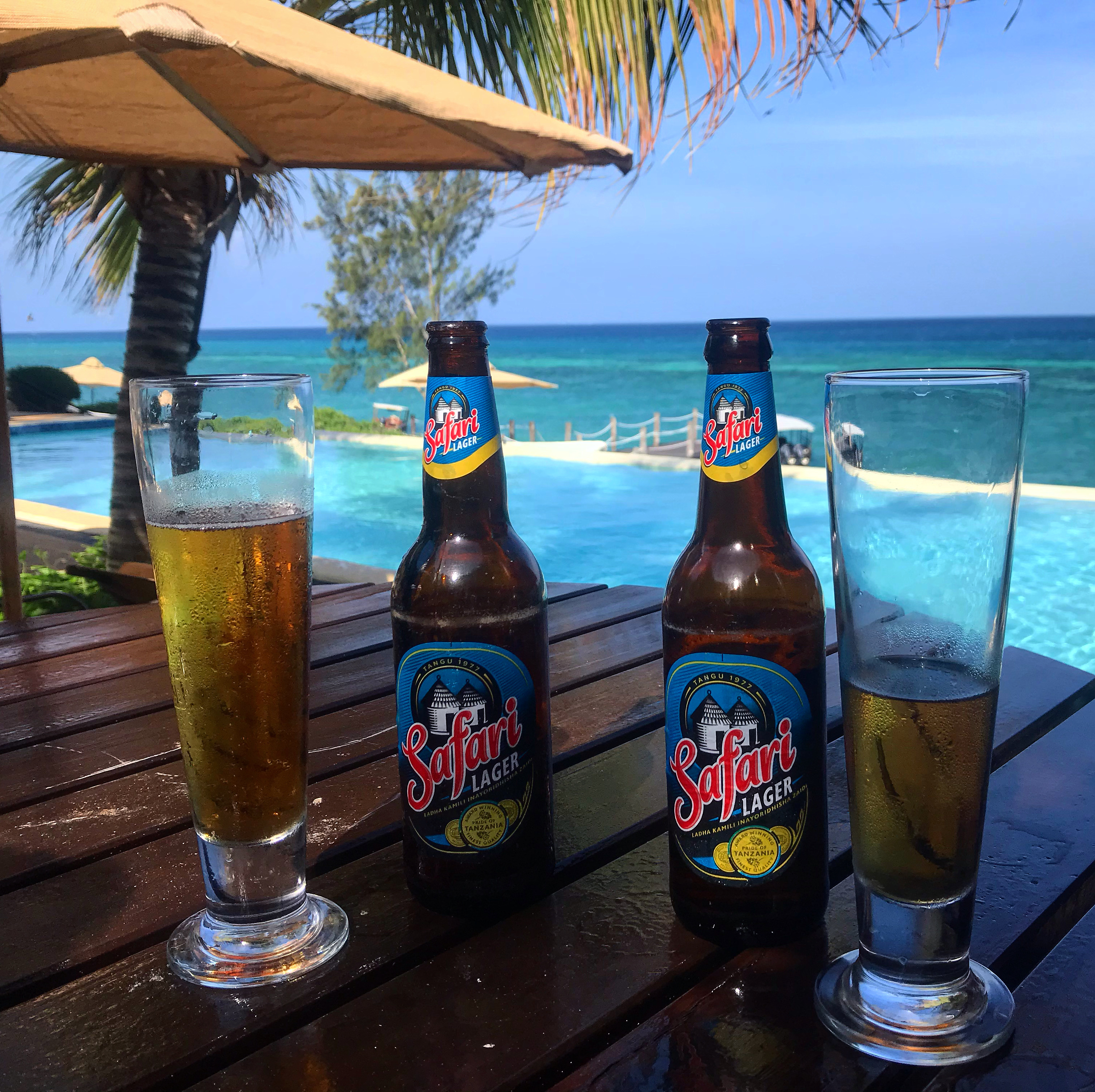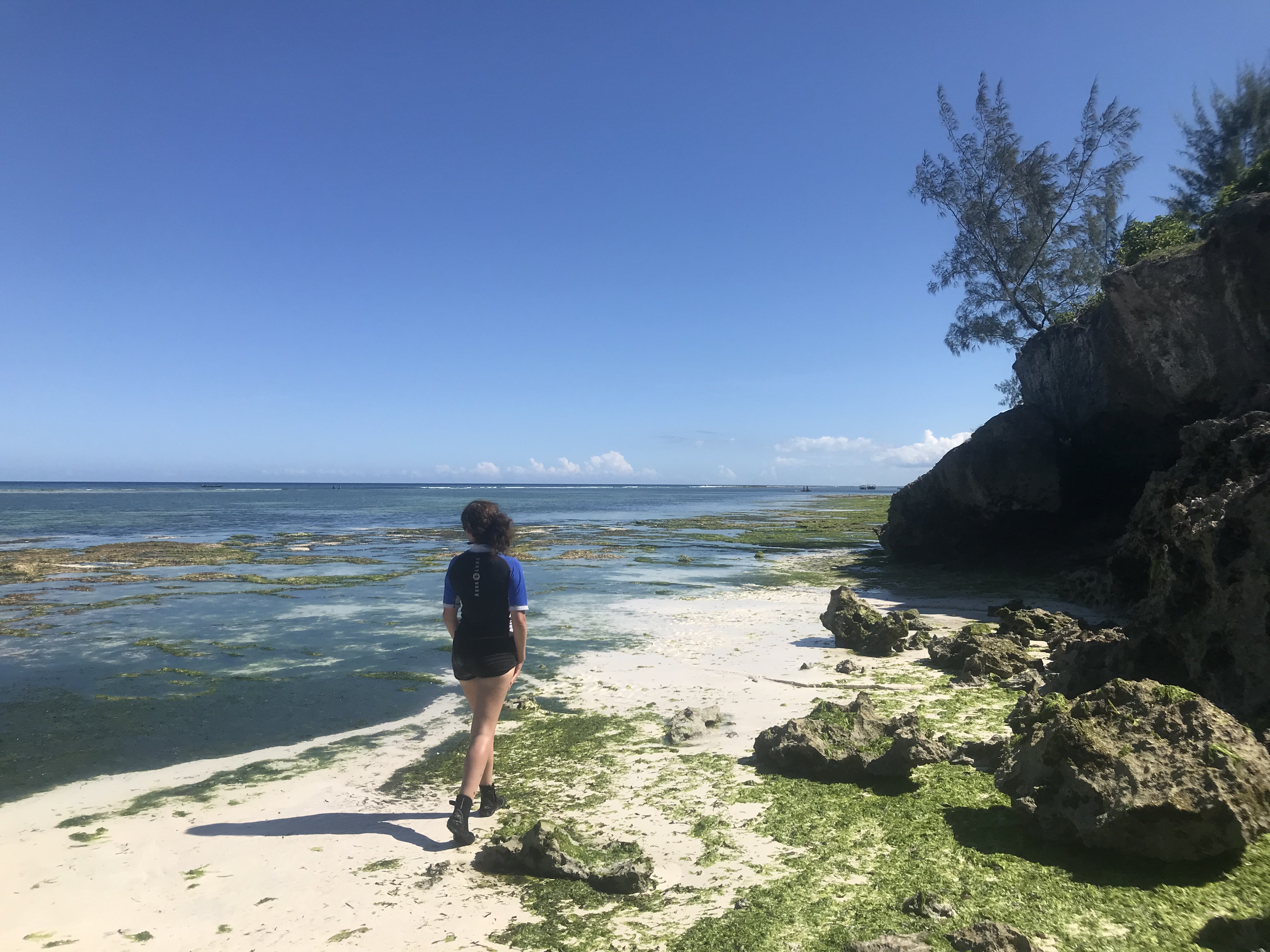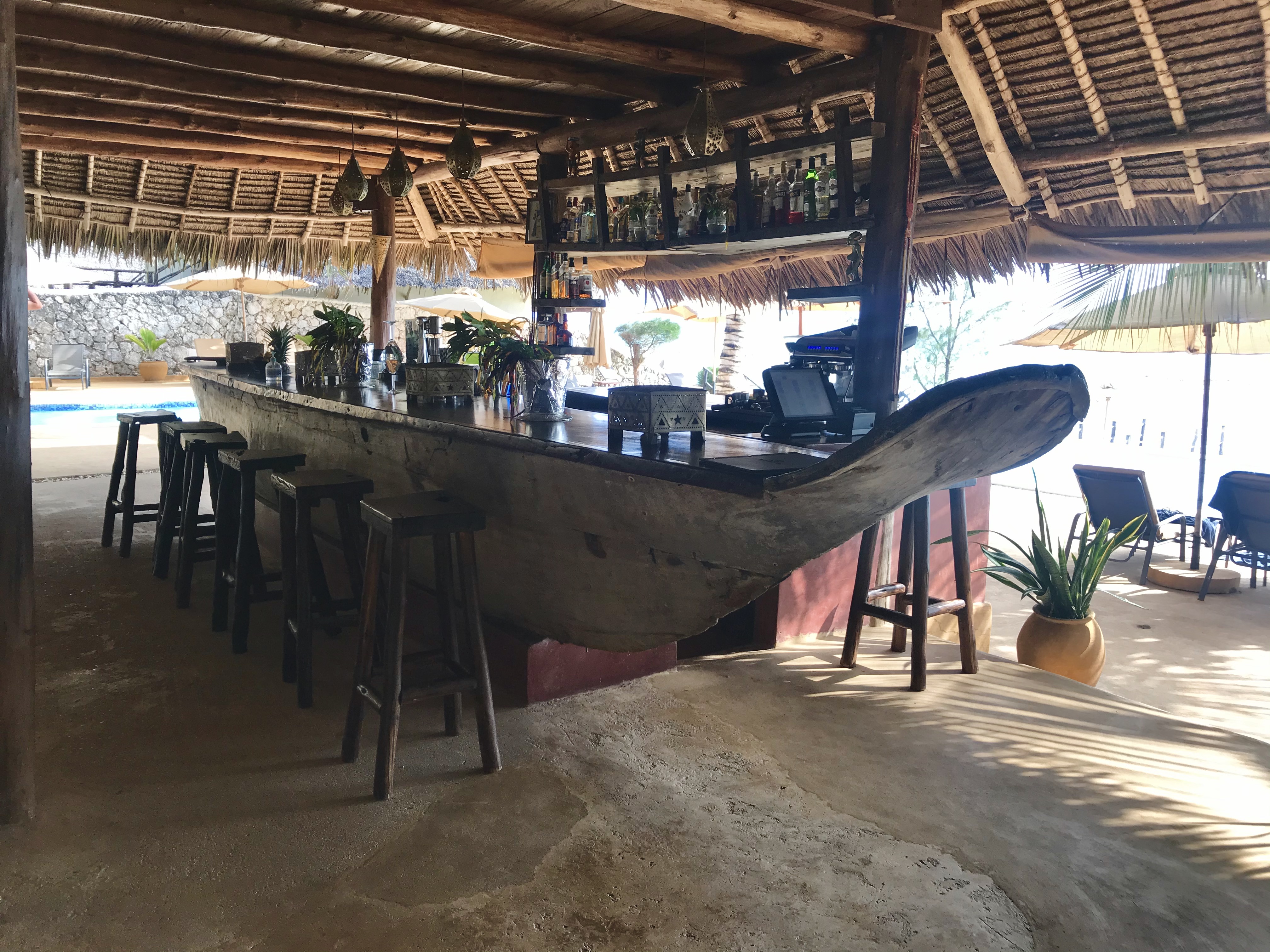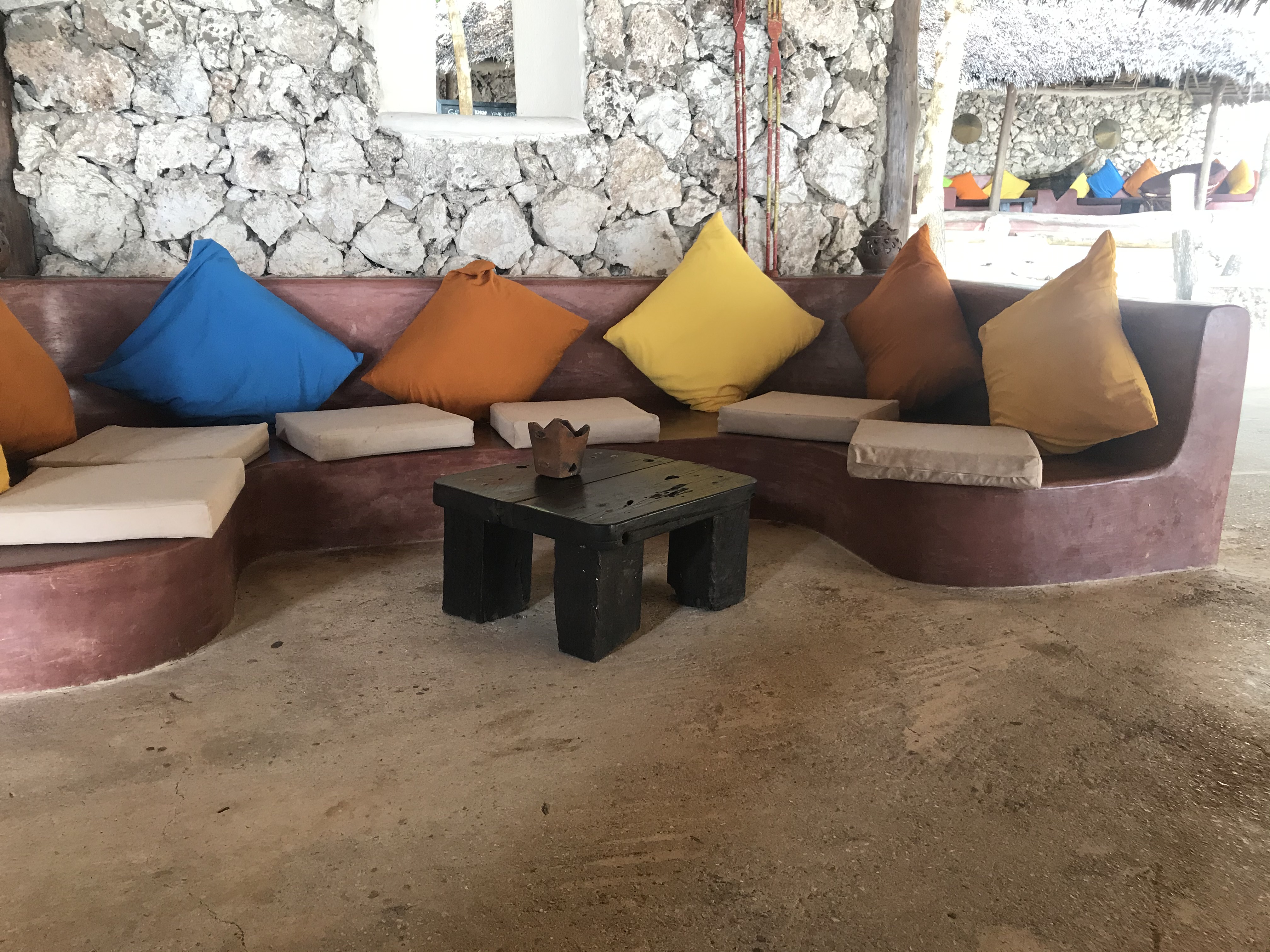Zanzibar
Zanzibar is an archipelago of two main islands Unguja and Pemba, and many smaller islands. Unguja is more commonly known as Zanzibar. The capital Zanzibar City is located here, together with a UNESCO World Heritage Site Stone Town. Pemba is isolated from the Unguja island and the mainland by deep channels.
The island is home to approximately two million people. English is widely spoken, together with Swahili and Arabic. Climate is tropical, and it is hot all year round.
The locals are friendly, always greeting with a big smile and a loud JAMBO. But unfortunately, they live on an economically very challenged island. Their income can be less than 1 USD per day, although the average paycheck is between 100 and 250 USD per month. While walking on the beach, kids may ask for ‘pipi’, which means sweets, or even a dollar. Although it is hard to say no to a child, this kind of behavior encourages a begging mentality. Many kids are not sent to school because parents realized they could earn more while begging on the beach. I am sure most of us would like to help the community, but there are other ways. Tipping is the most obvious way of helping, but it doesn’t help kids directly. I recommend talking to kids in English so they can practice. Another option is to bring the school supplies to Zanzibar or simply help when needed. A small act of kindness can mean the world to someone.
Island life moves ‘pole pole’, Swahili for slow. It is not worth fighting it since it is a fight impossible to win. Allow and enjoy the slow tempo and appreciate little things. Do not forget that you are on vacation.
The main religion is Islam (99%). There are few stores in Stone Town that sell alcohol but discretion while carrying it is advised. Bringing a backpack or a bag that is not see-through seems a good idea. Alcohol is served in most larger resorts and hotels, but small locally-owned restaurants usually do not offer liquor.
While visiting villages and cities, clothing should be modest. It is enough to cover shoulders and knees but avoid sleeveless tops and mini skirts. In resorts, it is fine to wear bikinis and shorts. Using common sense and showing respect to locals will make the stay unforgettable.
Zanzibar is also known as the ‘Spice Island’. Their history has created one of the most interesting cousins. Common spices are saffron, cardamon, vanilla, pepper, nutmeg, lemongrass, and clove. The best way to learn more about it is to book a spice tour with an official agency or a hotel booking center.
There are very few ATM’s around the island. Most of them are in Stone Town. Credit card is widely accepted in all larger hotels and activity canters.
1. Travel Adapters
The standard voltage is 230 V. Most sockets have standard UK three pin, but you may find small two-pin and large round three-pin sockets in older hotels.
2. Motion Sickness Medicine
Prevention is better than a cure. Sea can be quite rough sometimes, especially around Nungwi.
3. Dry Bags
Dry bags are essential if you’re going on a snorkeling or diving trips. Pack a small dry bag inside your daypack for boat trips, or use a waterproof phone case to keep your phone and other gadgets dry.
4. Underwater Camera
The world down there is stunning, and make sure to bring home some fantastic memories. But remember, touching marine life is a big no-no for all divers, and while you can take home some beautiful photos, please leave everything else in the ocean. Except for the trash. It is ok to take the trash with you.
5. Powerbank
There can be some power outages sometimes. A power bank can save the day or save the dive when you need to charge your dive computer.
6. Sunscreen
Take lots of sunscreens with you, and make sure it has double protection. It should protect both your skin and the reefs.
7. Sunglasses
Protect those beautiful eyes with a nice pair of sunglasses. They are not only stylish, but they also prevent sun-related health problems, like glaucoma, skin cancer around the eyes, migraines, and they give you a better vision. A big plus is also that you can stare if you want to. Nobody will know.
8. Sun Hat
Enjoy those sun-soaked days and protect yourself from the heat. And wrinkles. We do not want wrinkles.
9. Snorkeling Gear
Snorkeling gear is personal, especially a mask. And mask clearing sometimes requires questionable treatment. Not only owning a mask is more hygienic, but it also fits better, so you can see those spectacular reefs and colorful fishes.
Fins are also important. I cannot imagine using anyone else’s. They must fit perfectly and give a good lift and control over every move.
10. Swimwear
‘If it requires a bikini, my answer is yes.’ When it comes to swimwear, more is less. And those little pieces don’t take too much space in the suitcase anyway. Do not listen to your other half telling otherwise.
11. Summer and beach dresses.
12. Longer dresses and sleeves for visiting cities and villages.
13. Shoes
All you need is flip flops and diving or water shoes. Water shoes are a must if you stay in Sunshine Marine Lodge Hotel since there is a beautiful walk along the shoreline to the gorgeous Mayuni beach. It is impossible to do the walk without shoes since there are fossil corals and sea-urchins.
If you like to bike, take sports shoes. There is a new road on some parts of the island that looks safe to bike. We did around 20 km. The road through the village was rough, while the new road was a biker’s dream, with a wide biker’s lane on each side. The kids in the village were very welcoming, running behind us, smiling, and yelling JAMBO. They looked so excited to see us.
14. Shorty (for divers)
We used 3 mm shorty for diving, and it was perfect. Water is warm even at 30 m.
15. UV Protection Clothing
Not only it protects from sunburns but as well reduces the amount of used sunscreen. It is worthy to invest in the quality ones, which can last many years.
1. Plastic Bags
Plastic bags are banned. Yes, you read that correctly. As of June 1, 2019, plastic bags are banned due to environmental issues. ‘Ziplock’ bags usually used to carry liquids in your carry on bag, are still allowed. Thumbs up for Zanzibar!
2. Cigarettes
It is allowed to import up to 200 cigarettes per person older than 16 years.
3. Liquor
It is allowed to bring 1 liter of spirit or wine per person older than 16 years.
4. Narcotics And Psychotropic Substances
Possession of drugs can result in lengthy imprisonment.
5. Pornographic Material
6. Local Currency
The import and export of local currency are prohibited.
7. Live Animals, Plants, Foodstuff, And Seeds
For these are needed additional documents and health certificates.
Please note that it is prohibited to export natural souvenirs, such as starfish, shells, corals, bones, etc., even though it is possible to buy them from beach sellers and souvenir shops. Do not buy!
There is a lot of other, more specific prohibited items. I just listed the ones that I found interesting, and that can be more commonly found in the average suitcase.
The best time to visit Zanzibar is from December to February when it is dry and hot or between June to October when it is dry and cool.
From March until May is the monsoon rainy season, which brings the year’s volume of rainfall. There are exceptional humidity and long rains, which can last for days. On a positive note, accommodations are much cheaper, the temperature is still around 30 degrees Celsius, and the average amount of sunshine is still six to seven hours per day.
‘Mwaka’ is the period of short rains, typical for November and December. I was in Zanzibar at the beginning of December, and there was no rain, although it was very hot and humid.
Well, anyway, the weather is super hard to predict. While I am writing this (January 2021), there are 20 degrees Celsius in Athens, instead of their usual 6 degrees. I have also visited Maldives and Samoa during the wet season, and the weather hardly affected my plans.
Zanzibar is famous for its turquoise water and snow-white beaches, which makes it a perfect tropical getaway. It is also an ideal dive getaway, where there is something for everyone. Dive sites include reef, wall, and limited wreck diving. With a little bit of luck, it is possible to spot a tuna, whale shark, turtles, dolphins, and a lot of macro diving.
The average water temperature is between 26 to 28 degrees Celsius and visibility up to 50 m. Zanzibar is a great diving destination throughout the year, but for divers with a specific interest, the highest possibility of sightings are as follows:
Whale shark: My favorite fish. Unfortunately, although I was visiting in December, I haven’t spotted one. The best time to see this beautiful animal would be from September to December (Mnemba Atoll).
Dolphins: All year-round. I spotted them from a diving boat in Nungwi, but they weren’t interested in hanging with us.
Eagle rays: June to March. We saw them while diving.
Manta rays: December to April. We didn’t spot them while diving in December.
Blacktip reef sharks: June to March. We saw them during the dive.
Hammerhead sharks: November to February. I am still waiting to see one.
Sea Horses: June to March. We spotted a Sea Horse at Mnemba Atoll.
Humpback whales: July to October. I would love to see one while diving. I saw them when I was in Alaska on a boat, and it was beautiful.
Turtles: all year round. But there is not a lot of turtles left around Mnemba Atoll. We had 15 dives all together and only saw it once during a night dive. But that one time was spectacular. The turtle was super playful and enjoyed being around us.
To summarise it briefly – the best months to dive are from December to March and from July to September.
We did two dives from Nungwi to the north and 13 dives around Mnemba Atoll. In the north, I liked The Magic Reef. It is an easy dive between 12 and 20 meters. We saw a Moray eel, lots of colorful Leaf Fish, Mantis Shrimp, Octopuses, and for me most fascinating, Striped Eel Catfish. I have never seen it before, so it got my full attention. Catfish live in the sea and freshwater. Their name comes from the barbels around their mouth, which look like cat whiskers. They stay together in a big group, feeding on the sandy bottom. I didn’t know they were poisonous. They look cute, but on their dorsal and lateral fins, they have venomous spines, which could be dangerous even to humans.
All other dives were around Mnemba Island, and every dive was mesmerizing. We did Kichwani, Big Wall, Small Wall, Aquarium, Turtle Reef, Kesha Reef, etc. Everywhere around Mnemba, we saw a lot of octopuses, Moray eels, Lionfish, Scorpionfish, and Stonefish.
We did our night dive around Kesha Reef, and it was fantastic. Kesha Reef was the only place where we saw a turtle, which is rare to see. Even at Turtle Reef, there are almost no turtles anymore. We also saw a frogfish and a sea horse. It was a nice place to dive, but I think it is more a local thing, very close to the dive shop.
On Mnemba Sandbanks, I spotted my first crocodile fish. It was my last dive, and I really wanted to see it, and there it was, waiting for me. The spot I also remember is Kichwani. It was a nice place to dive, and while we had a safety stop at 5m, our DM couldn’t get his eyes off some kind of a sea slug. We already exited, and while looking down, he was still totally enchanted by the animal. We laughed, and when the DM came out, we asked what was all that about, and he replied that it was a rare species of Nudibranch that he didn’t see yet. Unfortunately, we were too inexperienced in local marine life to appreciate it as he did.
Diving Prices in Zanzibar
Diving prices in Zanzibar range between $45 to $60 per dive, depending on how many dives you do and which dive center you go with. At The Dive Point, there is no additional charge to dive in Mnemba Atoll, while others charge an additional fee. Some charge renting the gears while others don’t.
I get seasick very easily, and after reading about different dive sites, we decided to do most of our dives around Mnemba Island. Our first idea was to stay at Nungwi, which is a one-hour boat ride from Mnemba. The plan was to dive every day, and riding the boat for so long seemed like a huge waste of time. We wanted less time on the boat and more time underwater. My research went into depths. After realizing we will stay close to Mnemba, I started to look for new options. Mnemba Island &Beyond was the nearest resort but not an option for us. Staying there would cost us at least 7000 EUR for eight days. I know – YOLO, but 7000 EUR for one week? Not worth it.
I started to look into the Matemwe village. It looked more like what we wanted, but I still needed to find a good diving center. I stumbled upon The Dive Point, and the reviews were stunning.I immediately decided to book with them, and while looking for a hotel, it became clear I made the right choice. Dive Point is located in a beautiful Sunshine Marine Lodge Resort. Due to the early morning dives, I always prefer to stay in the same hotel, where the dive shop is. I love easy mornings, without the stress of running late. After ticking all my boxes, I made my bookings.
We did 15 dives each, all with The Dive Point. I have never been to a better dive shop, even though we travel a lot. After arriving at the hotel, we went to make our booking for the dives personally. At the reception, we talked to Mr. Hamisi, who left no doubt that our choice was correct. Not only that he explained everything to us, but we also chatted about the dive sites, diving, sea life, and lots more. We left with the feeling that our diving will be in the hands of professionals, who also love their job. Hamisi also brought a smile to our faces many times afterward. I loved his warm, cheeky humor.
Our divemaster Saludm was also incredible. He was kind and sweet, and he found so many little animals, lionfish, stonefish, crocodile fish, scorpionfish, frogfish, sea horse, and lots of octopus. We were also lucky to see a turtle during the night dive. Unfortunately, turtles are not so frequent around Mnemba Atoll these days. For me, it was incredible how our DM managed to find all the animals so easily. On a specific dive, I asked him to show me the frogfish and the crocodile fish. And he did.
I was amazed since it is so hard to spot these animals. Our DM also helped me reduce weights to only 2 kg, and I increased my underwater time.
The dive shop manager Mr. Simon is doing a great job. Equipment is new, and everything runs smoothly. What I admire the most is the interaction within the team. Everyone seems to be friends, with no competition, and they also cooperate underwater and show their findings to each other. We were lucky enough to have our DM for ourselves. Anyways, groups are not larger than four divers per DM, which is an amazing ratio.
And last but not least, the dive boat. The dive boat was spacious, and the crew made sure we were comfortable. The crew does a valet thing, which means they do the full service, from loading the equipment, setting it up, to pampering divers with tea, fruits, and cakes. All the divers need to do, is to jump into the water and dive.I am not a super fan of this kind of service since it is too easy to forget how to deal with the equipment. Every dive is a chance to practice and to get more experience. Everyone should be able to set their equipment and enter the water by themselves. Anyway, the truth is that it is always possible to deny the service.
I also liked that the two dives are done in the morning, which allowed us to relax in the afternoon.
To summarize it, if you want to have a great time with professionals, who are enjoying their job, then do not search further. Dive Point is the best buddy you can have in Zanzibar.
We stayed in Sunshine Marine Lodge for eight nights. We choose the resort because of the dive center on the premises. This stunning resort is slightly raised on the cliff, overlooking the Indian Ocean. Architecture is sustainable, with bandas built under traditional high makuti thatch roofs and surrounded by lush gardens. All 24 rooms are equipped with traditional built-in Swahili style furniture in light pastel color. There is no air condition. The rooms are designed to make the most out of the cool sea breeze in combination with fans in the room. We used fans, and it felt fine.
In this eco-friendly resort, they do not use excessive plastic:
- They refill the glass water bottles in the room.
- On the dive boat, they offer real cups for tea. The water is from water balloons.
- Shampoo and conditioner in the room are in big bottles, which are possible to refill.
- For the restaurant, they buy fishes from local fishermen.
- They do not offer endangered lobster on the menu. It is possible to buy it in some other restaurants, but I wouldn’t recommend it for obvious reasons.
- Beer is sold in bottles and it is mostly local.
- The bar in the restaurant is made from an old wooden dhow.
These are all little things that make a huge long term impact.
The service was amazing, and the room was clean and well kept. Every evening they did the turndown service and closed the mosquito net around the bed.
Interaction in the restaurant & bar was also great. The staff was very friendly and polite, and they took good care of us. I read some bad reviews regarding food, which I find surprising. The food was delicious, and every day there were lots of different options available. With Swahili of the day, it was possible to immerse into the native culture through the local cooking. And good old burgers were available as the afternoon snack. I do not eat meat, and I still found a variety of food for me.
The resort doesn’t have a beach, but they offer the transfer free of charge to the nearby sister hotel with a nice beach area. We went there by bike, and it was a nice and safe ride on the new road. Bike rental is complimentary, but the maintenance of the bike is quite bad. I would prefer to contribute a little bit and get a good bike.
Overall, I cannot wait to return to this beautiful resort.
Important Swahili words
JAMBO – Hello
KARIBU – Welcome
AHSANTE – Thank you
TAFADHALI – Please
SANA – Very (Karibu Sana, Ahsante Sana)
HAKUNA MATATA – No worries.
POLE POLE – Slowly, slowly
HARAKA – Faster (but this word is of no use in Zanzibar 🙂 )

